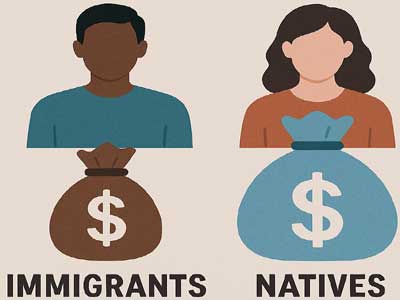New research from Frankfurt School of Finance & Management finds that immigrants to Europe and North America earn almost 18 per cent less than native citizens, largely due to limited access to higher-paying jobs.
Prof Halil Sabanci and colleagues analysed employer-employee data of 13.5 million individuals from Canada, Denmark, France, Germany, the Netherlands, Norway, Spain, Sweden and the United States.
The findings reveal an immigrant-native pay gap of 17.9 per cent overall, which is not primarily driven by unequal pay for equal work, but by limited access to jobs in higher-paying industries, occupations, and companies for immigrants. Specifically, three-quarters of the immigrant-native pay gap was due to being more likely to end up in lower-paying employment.
The pay gap varied widely among countries for first-generation immigrants: Spain (29.9 per cent) and Canada (27.5 per cent) had the largest overall gaps. Norway (20.3 per cent), Germany (19.6 per cent), France (18.9 per cent), and the Netherlands (15.4 per cent) saw mid-level differences. The smallest differences relative to natives were found in the US (10.6 per cent), Denmark (9.2 per cent) and Sweden (7 per cent).
For Canada, Denmark, Germany, the Netherlands, Norway, and Sweden, researchers also looked at the earnings patterns among the children of immigrants. They found that the pay gap shrinks substantially from 17.9 per cent to 5.7 per cent but persists, especially for children of immigrants from Africa and the Middle East. Notably, when comparing those doing the same job for the same employer, the second-generation gap drops further to around 1.1 per cent, indicating much greater parity.
“These findings shed new light on persistent pay disparities and have direct policy implications. While enforcing equal pay for equal work matters, the bigger challenge lies in opening access to higher-paying jobs. Addressing hiring bias and improving job-matching programmes may go much further”, says Prof Sabanci.
The study highlights the importance of policies aimed at improving access for immigrants to roles in higher-paying industries through language training, skill development, job search assistance, domestic education, foreign credential recognition, and enhanced access to job-relevant information and networks.


















Related Items
Better water management helps halt the march of the desert in Rajasthan
Shielding sovereignty against America’s double-dealing
A surviving Iran is more valuable to America…